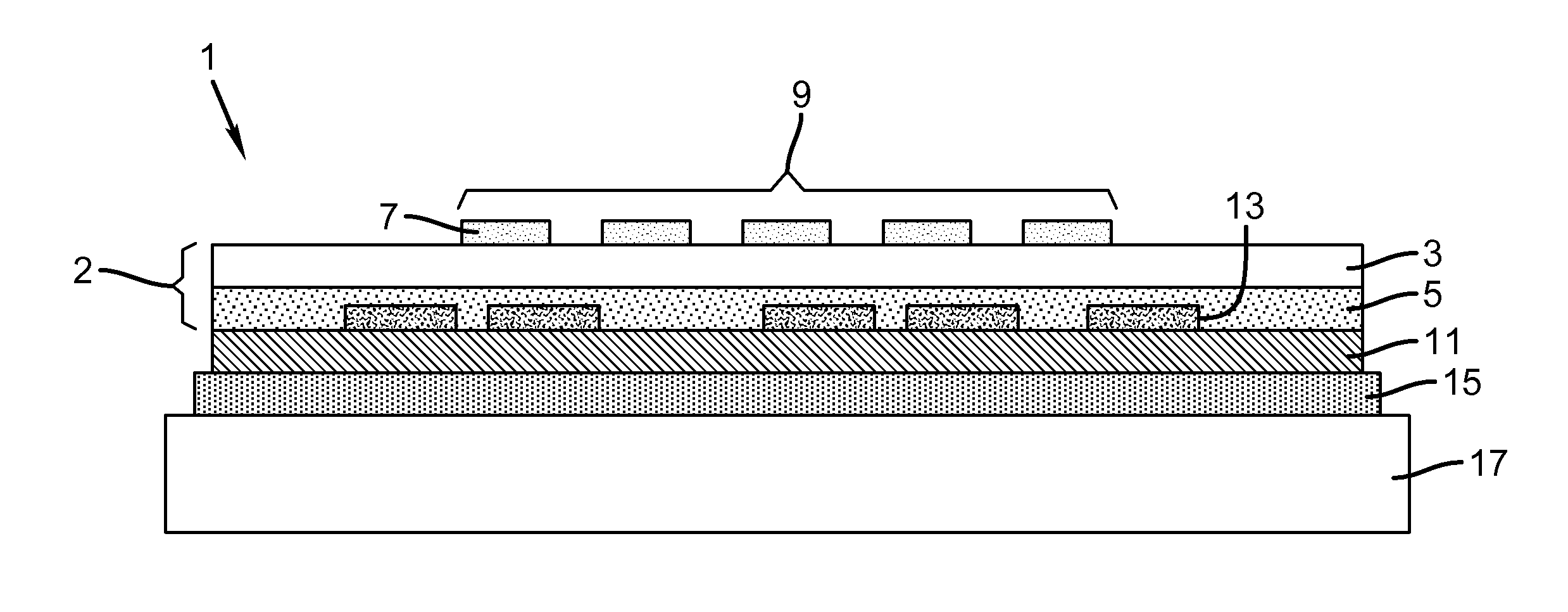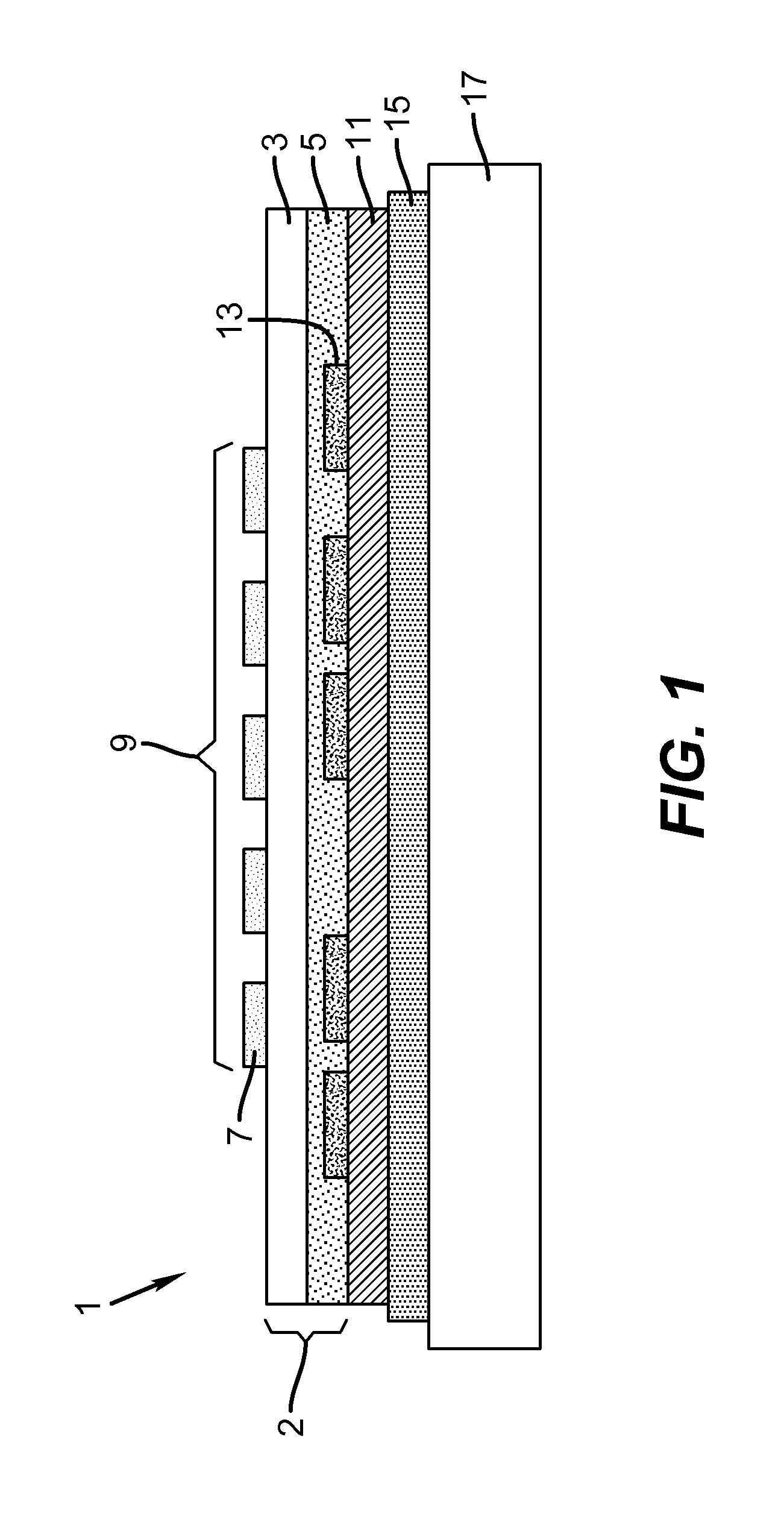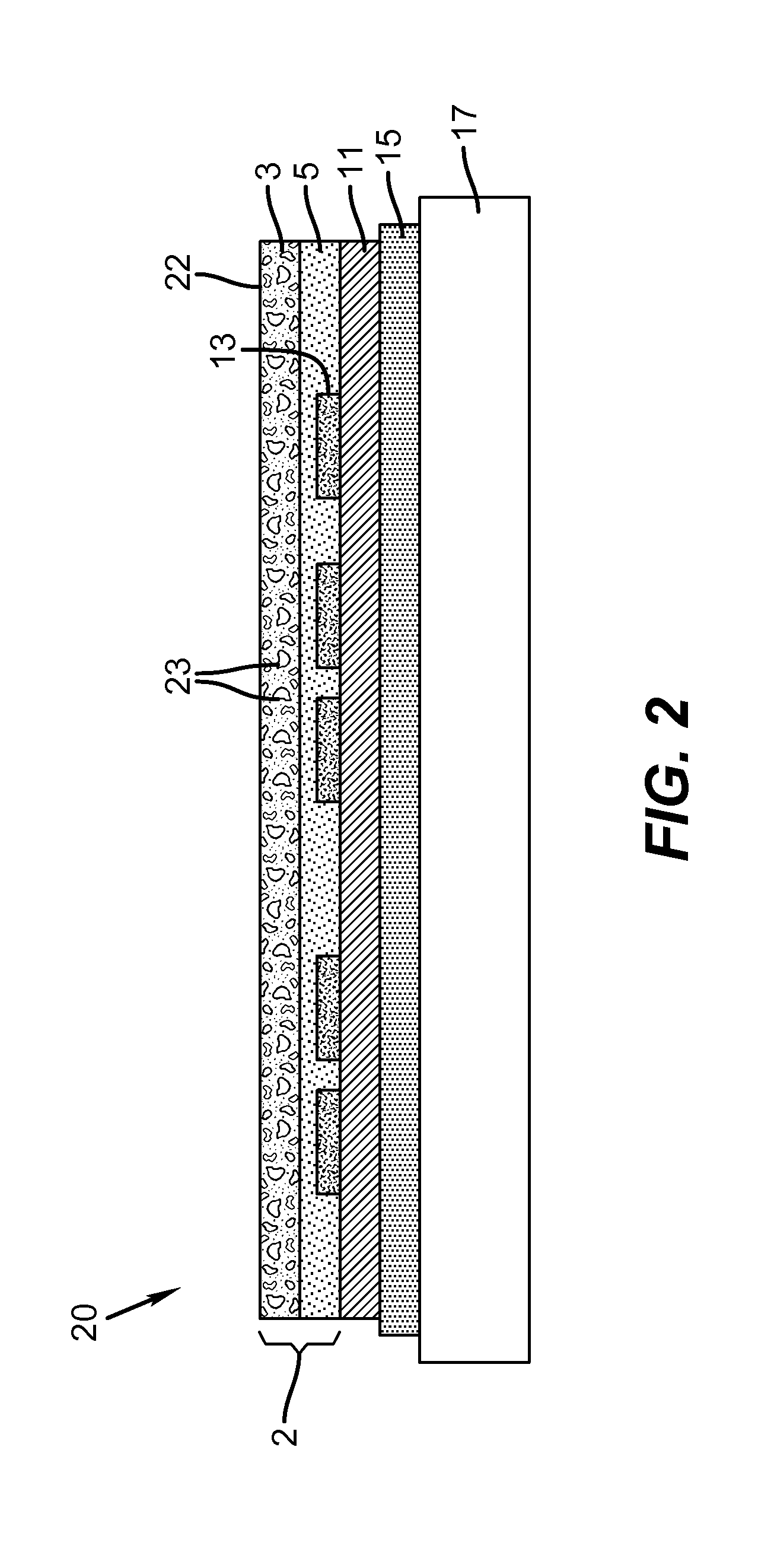Security label laminate and method of labeling
a security label and laminate technology, applied in the field of security labels and laminates, can solve the problems of inability to reliably detect or inability to reliably detect and read optically detected markers when printed or placed over black text, and difficulty in reliable detection and reading of such data over specularly reflective backgrounds, such as silver foil, to achieve the effect of maximizing the detectability of markers, reducing the amount of marker materials needed, and eliminating optical interferen
- Summary
- Abstract
- Description
- Claims
- Application Information
AI Technical Summary
Benefits of technology
Problems solved by technology
Method used
Image
Examples
example 1
[0040]Thermal transfer ribbon is prepared with a UV excitable material, UVXPBR. This particular material has the property of emitting red visible light after excitation with UV light, as described at www.maxmax.com. The UVXPBR is mixed with a clear resin (15% resin, 85% solvent, primary component 2-butanone) at a concentration of 1000 parts per million (ppm). This is accomplished by dissolving 0.03 g UVXPBR in 30 g resin solvent mixture and stirring to solution at room temperature. The resulting clear solution is hand coated on pre-slit 4″ wide thermal transfer ribbon with a number 4 Mier rod. Coated thickness after solvent evaporation is about 1 micron and the marker content in the resin is about 6667 ppm. Several hand coatings are completed in series and the ribbon is wound, coated side out, on a new 1″ core.
[0041]The freshly prepared ribbon was threaded onto a Zebra model ZM400 thermal transfer printer. Along with this ribbon, 1″ round clear label laminates 2 produced by laminati...
example 2
[0053]A thermal transfer ribbon is prepared with A-225 up-converting IR excitable material available from Epolin, Inc. This particular material has the property of emitting green visible light after excitation with IR light, as described at www.epolin.com. The A-225 material is mixed with a clear resin (15% resin, 85% solvent, primary component 2-butanone) at a concentration of 1000 ppm. This is accomplished by mixing 0.03 g A-225 with 30 g resin solvent mixture and vigorously stirring to dispersion at room temperature. The resulting mixture is hand coated on pre-slit 4″ wide thermal transfer ribbon with a number 4 Mier rod. Coated thickness after solvent evaporation is about 1 micron and the marker content in the resin is about 6667 ppm. Several hand coatings are completed in series and the ribbon is wound, coated side out, on a new 1″ core. The freshly prepared ribbon is threaded onto a Zebra model ZM400 thermal transfer printer. Along with this ribbon, 1″ round clear labels, prod...
example 3
[0056]In this example, an IR absorbing dye was dissolved in 2-butanone, then mixed into a removable acrylic adhesive mixture at a concentration of 5000 ppm. The dye used was FHI9072, described on www.fabricolorholding.com. The adhesive mixture was coated on 2-mil polyester film to a thickness of 1 mil., thus forming the adhesive layer 5 of a label laminate 2. This resulted in a marker concentration of 12.5 microgram / cm2. The resulting label laminate 2 was then adhered over a polyester label substrate 11 and die-cut to shape. The resulting label 1 had no apparent visible colorations due to the IR dye.
[0057]Detection of the dye was accomplished via IR reflectance. The light source 40 was a digital Nikon 995 camera modified to remove the IR filter that normally covers the CCD array. The reader 42 used was a digital Nikon 995 camera in which a 650 nm long pass filter was placed in front of the lens in order to reduce noise in the signal. The camera was placed in a tripod approximately 2...
PUM
 Login to View More
Login to View More Abstract
Description
Claims
Application Information
 Login to View More
Login to View More - R&D
- Intellectual Property
- Life Sciences
- Materials
- Tech Scout
- Unparalleled Data Quality
- Higher Quality Content
- 60% Fewer Hallucinations
Browse by: Latest US Patents, China's latest patents, Technical Efficacy Thesaurus, Application Domain, Technology Topic, Popular Technical Reports.
© 2025 PatSnap. All rights reserved.Legal|Privacy policy|Modern Slavery Act Transparency Statement|Sitemap|About US| Contact US: help@patsnap.com



